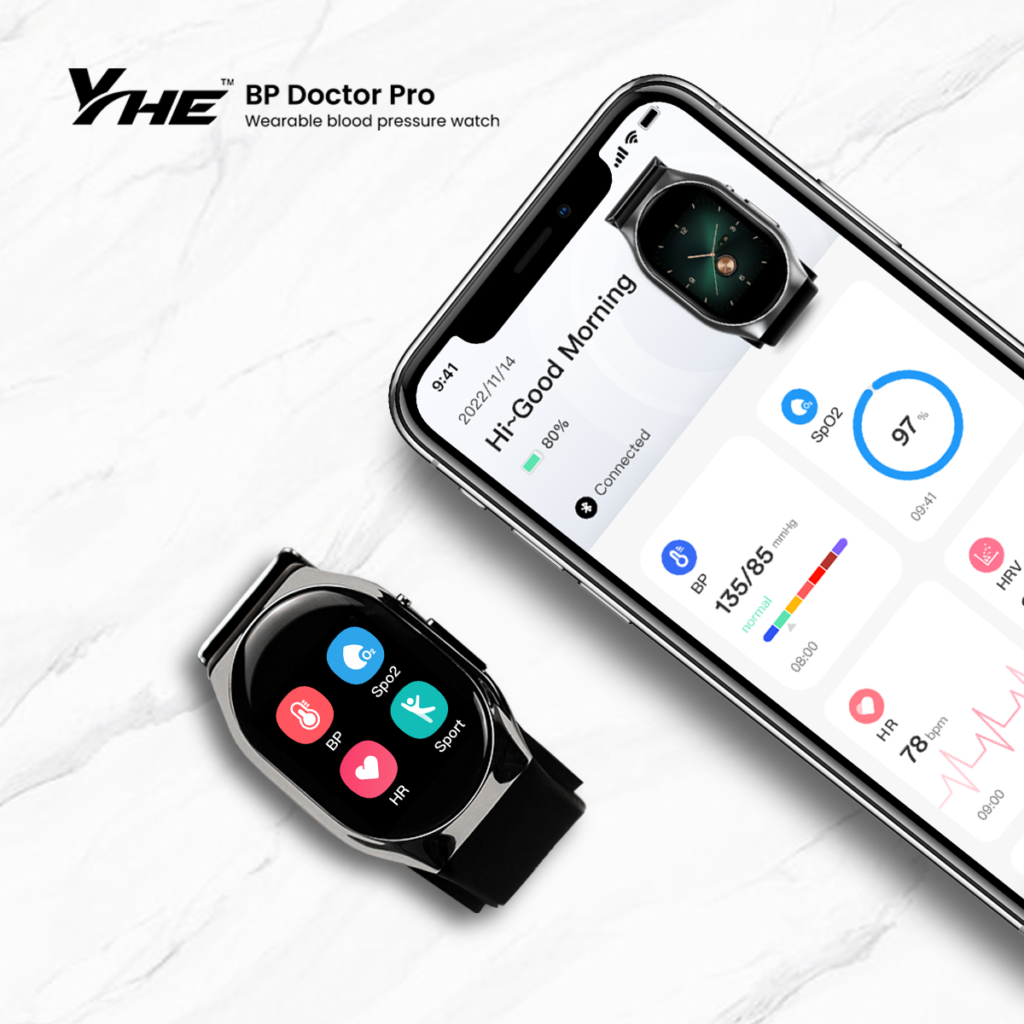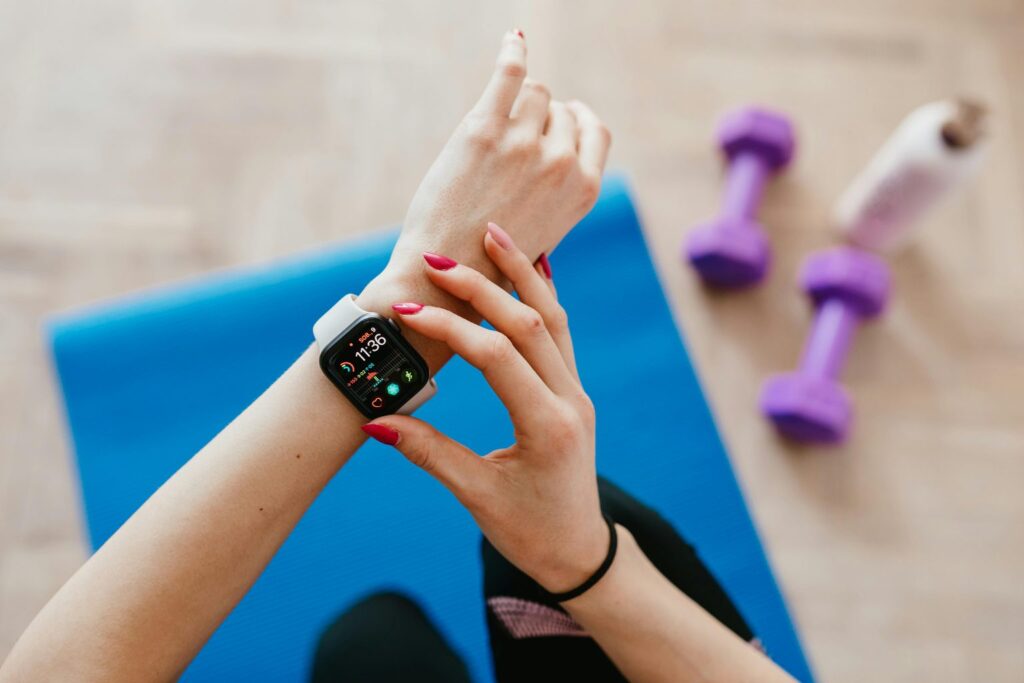Wearable technology in healthcare has rapidly transformed the way we approach health and wellness, offering users unprecedented access to their health data right at their fingertips. These devices—ranging from fitness trackers to smartwatches—have evolved beyond mere gadgets; they are now essential tools for personal health management.
Just like millions of people around the world today, I personally wear a smart watch that monitors my physical activity and gives me feedback on my stats as to weather they are trending or not. I am then able to make the right adjustments as necessary. It monitors my heart rate and gives me feedback on noise levels around me.
As awareness grows around chronic diseases and preventive care, the adoption of wearable technology in healthcare is becoming increasingly vital. Individuals now have the power to monitor their heart rates, track physical activity, and even assess sleep patterns with an ease that was unimaginable just a few years ago.
The significance of wearable technology in healthcare has surged in recent times, particularly in light of global health challenges that have underscored the importance of monitoring personal wellness. In a world where self-care has become a priority, wearables provide actionable insights that empower users to make informed decisions about their health.
For instance, a simple step counter can motivate someone to be more active, while a heart monitoring feature can alert them to potential health issues before they escalate. This shift toward proactive health management marks a significant departure from traditional reactive healthcare approaches.
Read Also – Genomics and Personalized Medicine: The Future of Tailored Treatments
Types of Wearable Technology in Healthcare

Fitness Trackers
When it comes to wearable technology in healthcare, the options are diverse and constantly evolving. Among the most popular are fitness trackers, which have captured the interest of health enthusiasts and casual users alike.
These devices typically measure parameters like steps taken, calories burned, and even sleep quality. The allure of fitness trackers lies not only in their functionality but also in their ability to gamify wellness, encouraging users to set goals and compete with friends.
Many models now include smartphone integration, enabling users to receive notifications and track their progress through dedicated apps.
Check this Out! Sitting Disease Putting Nearly 1.8 Billion Adults at Risk
Smartwatches
Smartwatches have also made significant strides in the healthcare space, merging the functionality of a traditional watch with advanced health monitoring capabilities.
Features such as heart rate and blood pressure monitoring, ECG readings, and even blood oxygen levels provide invaluable real-time health data. With the ability to make and receive calls or texts, smartwatches keep users connected while fostering a proactive approach to personal health management.
These multifunctional devices serve as everyday companions, constantly reminding users to engage with their health and well-being.
Wearable Sleep Trackers
Sleep is a vital component of overall health, and wearable sleep trackers help users monitor and improve their sleep quality. Devices like the OURA Ring and Fitbit’s various models provide insights into sleep patterns by measuring metrics such as sleep duration, sleep stages (light, deep, and REM), and nighttime disturbances.
By collecting and analyzing this data, these wearables empower users to understand factors impacting their sleep hygiene, enabling them to make adjustments for better rest.
Additionally, many wearable sleep trackers offer personalized recommendations based on the data collected. For instance, they may suggest optimal bedtimes or lifestyle changes, such as reducing screen time before sleep or practicing relaxation techniques to improve sleep quality.
By emphasizing the importance of restful sleep, these devices contribute to holistic personal wellness, positively affecting day-to-day functioning, mood, and overall health.
You Might Wanna See This!20 Applications of AI in Healthcare: A Revolutionary Evolution
Smart Clothing
Smart clothing represents the cutting edge of wearable technology in healthcare, combining fabric with embedded sensors to monitor health metrics seamlessly. Garments like the Hexoskin Smart Shirt” and the Athos Activewear can track vital signs, such as heart rate, respiratory rate, and muscle activity during physical activities.
This data is particularly beneficial for athletes training for peak performance or individuals in rehab programs who need to monitor their exertion levels closely. Beyond sports, smart clothing has applications in chronic disease management.
For instance, smart fabrics can alert wearers or caregivers to significant changes in biometric readings, aiding in the management of conditions like diabetes or chronic obstructive pulmonary disease (COPD). By providing continuous monitoring and feedback, smart clothing acts as an extra layer of safety, allowing for timely interventions if abnormalities are detected.
Moreover, the comfort and convenience of smart clothing make it appealing for everyday use. Unlike traditional wearables like fitness trackers that may need to be strapped on or taken off at specific times, smart clothing integrates seamlessly into daily life.
Users can wear these garments throughout the day without feeling burdened by additional devices. As the technology continues to improve, we can expect even more advanced features, such as the ability to track hydration levels or detect stress through physiological changes—all contributing to a more comprehensive understanding of personal health.
Read Also – 20 Innovative HealthTech Startups in Nigeria That You Need To Know About!

Benefits of Wearable Technology in Healthcare
Health Monitoring Enhancement
The benefits of incorporating wearable technology into personal wellness routines are profound and multifaceted. First and foremost, these devices enhance health monitoring by making information easily accessible. Users can track various metrics over time, gaining insights that can lead to better health decisions.
For instance, a user who regularly monitors their activity levels may notice a trend of reduced physical activity during certain periods, prompting them to make lifestyle changes. This kind of data-driven awareness can help individuals identify patterns and adjust their routines accordingly, fostering a stronger connection between daily habits and overall wellness.
Improvement in Patient Engagement
Additionally, wearable technology in healthcare significantly enhances patient engagement. Traditional healthcare often involves passive participation, where patients follow doctors’ orders without fully understanding their health conditions. Wearables change that narrative by involving users directly in their health journeys.
Many devices allow for the sharing of collected data with healthcare providers, facilitating more personalized care. Doctors can tailor recommendations based on real-time data, resulting in a collaborative relationship that empowers patients with knowledge and encourages them to take charge of their health.
Read Also– How to Start a Successful Retail Pharmacy in Nigeria in 7 Steps
Challenges and Considerations
Data Privacy & Security
Despite the impressive advantages of wearable technology, several challenges and considerations warrant attention. One major concern revolves around data privacy and security.
As users provide sensitive health information through these devices, the potential for data breaches poses a serious risk. Users must be aware of how their data is being collected, stored, and used—both by the manufacturers of these devices and by third-party applications.
This transparency is crucial as it builds trust between users and companies and ensures that individuals feel comfortable using these technologies.
Read Also – Sitting Disease Putting Nearly 1.8 Billion Adults at Risk
Reliability of Wearable Devices
Furthermore, the accuracy and reliability of wearable devices can vary significantly. While many devices offer advanced features and capabilities, not all are created equal. Some budget-friendly options might compromise on precision or functionality, leading to potentially misleading health information.
Users need to do their research before choosing a device and should consider seeking guidance from healthcare professionals. It’s essential for users to understand that wearables, while beneficial, should enhance—not replace—traditional medical advice when it comes to health management.
Check This Out! Genomics and Personalized Medicine: The Future of Tailored Treatments
Future Trends for Wearable Technology In Healthcare
Looking ahead, the future of wearable technology in healthcare is filled with possibilities. With advances in artificial intelligence (AI) and machine learning, we can expect devices that offer even more personalized insights.
Imagine wearables that learn an individual’s unique health patterns over time, providing tailored suggestions based on historical data. This level of personalization could significantly improve both user experience and health outcomes, making it easier for individuals to adhere to specific wellness plans tailored just for them.
The integration of telehealth with wearable technology will also play a pivotal role in the future landscape of healthcare. As remote health consultations become more common, wearables can supply real-time data that allows healthcare providers to monitor patients closely, even from a distance.
This marriage of technology and healthcare paves the way for a more proactive approach to treatment, where early intervention becomes possible.
For instance, physicians could receive alerts for irregularities detected by a patient’s wearable device, enabling them to initiate timely discussions or treatments before health issues escalate. In addition, there’s potential for wearables to impact public health initiatives significantly. As more individuals embrace these devices, vast amounts of data can be aggregated to monitor community health trends.
By analyzing this data, public health officials may identify patterns that lead to more effective interventions or prevention strategies. This collective insight could aid in addressing widespread issues such as obesity, chronic disease, and mental health challenges. Utilizing wearable technology in healthcare, not just on an individual level but on a societal scale could transform our approach to health and well-being.
Read Also– How to run Retail Pharmacy in Nigeria for Success in 7 Steps
Conclusion
As we wrap up our exploration of wearable technology in healthcare, it’s clear that these devices are not just passing fads; they are revolutionizing personal wellness in remarkable ways. From empowering individuals with real-time health data to fostering stronger connections between patients and providers, wearables are facilitating a shift toward more engaged and informed health management.
They highlight the importance of proactive care, allowing users to take charge of their health rather than simply responding to issues as they arise. However, with any innovation comes responsibility. Users must navigate the landscape of wearable technology thoughtfully, ensuring they prioritize data security and device accuracy while leveraging these powerful tools for better health outcomes.
As we look to the future, the merging of wearable technology with advancements like AI and telehealth promises a new era of healthcare that is not only more personalized but also more connected. It’s an exciting time to embrace these innovations and harness their potential to revolutionize how we approach wellness at both personal and community levels. Embracing wearable technology might just be one of the best commitments you make toward a healthier future.




Pingback: From USAID to Uncertainty: How Aid Cuts are Changing the Game for Recipient Countries - Ideaspro